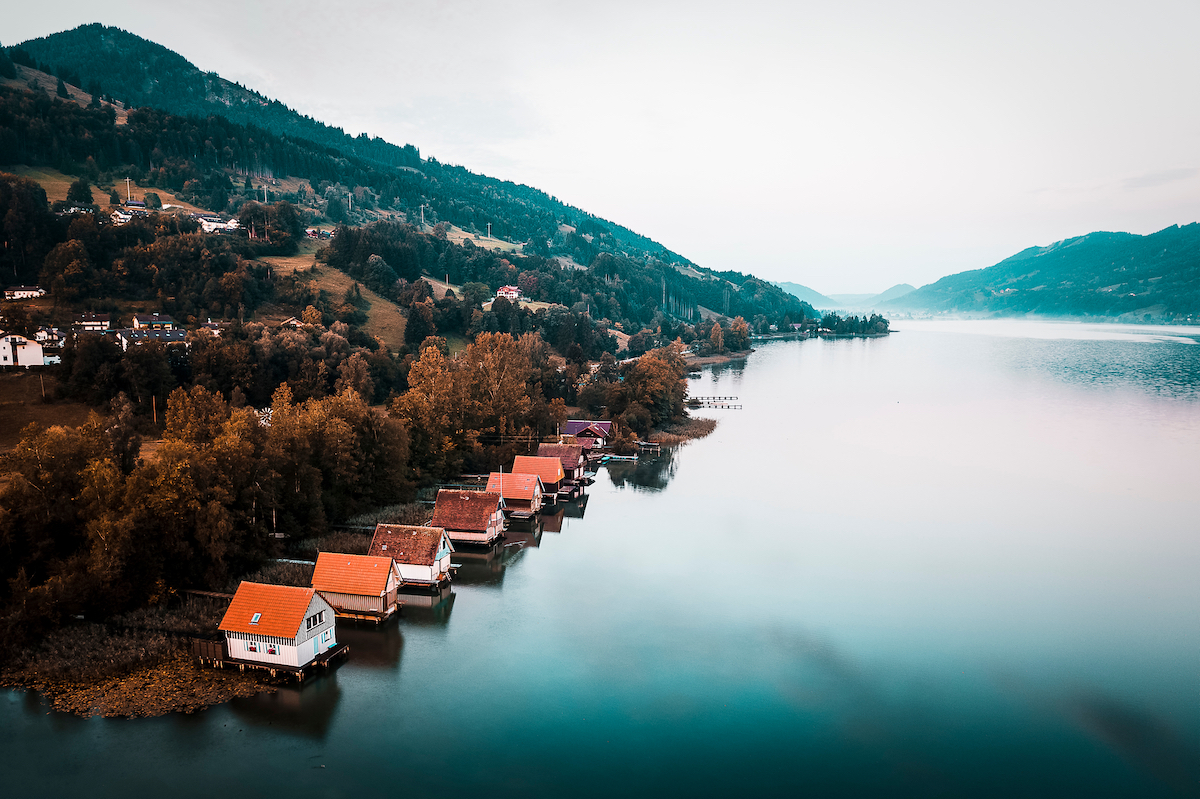The Great Alpsee
The Great Alpsee lake with its 247 ha of the water surface is the largest natural lake in the Allgäu, surrounded by meadows and forests, hills and mountains and it is the only lake in the cross-border nature park Nagelfluhkette. With its fantastic location, surrounded by mountains, meadows, and forests, it is definitely worth a visit. The lake and especially the beach promenade in Bühl are a year-round destination. Here you can sit in one of the cafes and enjoy the wonderful view or listen to the beach gigs of the Bühl concert band. If you are looking for sports activities, then you will also find these here. It is not for nothing that the Alpsee is a part of the distance of the annual Allgäu-triathlon, which by the way, is being held this year, for the thirtieth time.
If you want to swim, here it is worth the cost. The most beautiful swimming facilities can be found on the eastern shore of the beach promenade to the Hauser Strandbad, as well as directly on the B 308. Also popular are Erlebnissteg and bathing islands, from which you can dip directly from the towel into the water or lounge on the sunbathing area between the campsite and lifeboat station.
Der Große Alpsee hat für jeden etwas zu bieten. Whether it a pleasant walk on the lake promenade, a boat ride with rowing and pedal boats or the Lädine boats, a built-up medieval barge or a round of mini golf. Auch die Sportler kommen nicht zu kurz — der Alpsee bietet beste Möglichkeiten fürs Schwimmen, Kiten, Segeln und Surfen.
Large sedge swamp, lush straw meadows, peat meadows, and perennial herb nature trails mainly form the natural shore areas. A lot of very rare plants and animals in Bavaria and in the Federal Republic still have their home in this landscape. Orchid species, globeflower, marsh clover, water lilies, various species of sedge, bird’s-eye primrose, colorful horsetail, stemless gentian, yellow iris, and many other remarkable plants grow here. Water rail, great crested grebe, little grebe, common coot, reed bunting, sedge warbler, common sandpiper, marsh warbler, Eurasian reed warbler, and kingfisher – only a few types of list, bred into the Great Alpsee lake.
The entire valley area, in particular, the area of the large and small Alpine Lakes, is an important habitat for birds. It is used as a staging area for migratory birds, especially many swallows raced over the Alps during their migration and gathering new forces. As spawning biotope for migrating toads and frogs, the nature-related areas of the alpine lakes are essential. This unique habitat for animals and plants is particularly protected as a conservation area “Großer Alpsee” of about 827 hectares. It is bordered on the west conservation area the Small Alpsee of Immenstadt (small alpine lake near Immenstadt). This 67-hectare protected zone also serves to protect this unique small village.


